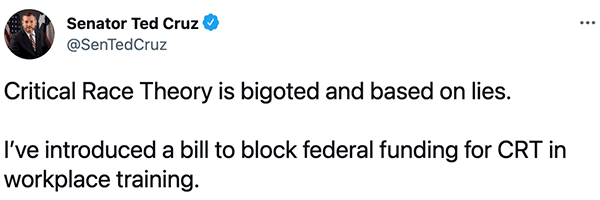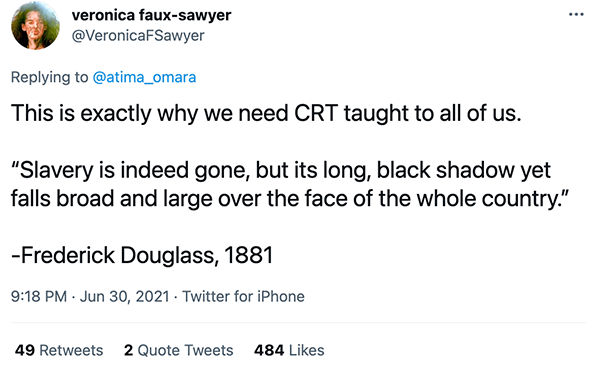CRT
CRT has 2 meanings
Critical Race Theory
Example
I can't believe they are going to include CRT in my kids' classes
But you don't have an issue with Confederate flags in government buildings? Hmmm


Related Slang
| AAVE | African-American Vernacular English |
| BIPOC | Black, Indigenous, People of Color |
| Woke | Aware of social issues |
| POC | Person of color |
| White fragility | Sensitivity of white people towards evidence of racism |
| Whitesplain | To explain something as a white person |
| CMV | Change my view |
| Performative allyship | Allyship that is performed to gain social standing |
| Virtue signaling | Demonstrating moral superiority |
Categories
Cathode Ray Tube
An acronym that refers to the technology used in traditional televisions and computer monitors; because of the tube used to display colors on the screen, CRT monitors are bulky and look like boxes; advancements in LCD screens are gradually replacing CRT monitors.
Example
I still have the 36" big box CRT TV I got in 1994. That thing is so stinking heavy!
 Take the pop culture acronym challenge
Take the pop culture acronym challenge
Critical race theory (CRT) is an academic concept that focuses on how racism permeates social institutions, such as government, education, healthcare, and financial institutions. It contrasts with the idea that racism is confined to an individual's prejudice against another race.
The theory is primarily utilized in academia to examine the role of race in how power is distributed and withheld throughout social institutions in the U.S., as well as Australia, Canada, and the United Kingdom. Researchers also use the theory to focus on how race intersects with other identities, like gender and income level, and how those factors relate to power distribution.
Where did CRT come from?
CRT was introduced in the 1970s by various U.S. legal scholars, including Kimberlé Crenshaw, Alan Freeman, Derrick Bell, and Richard Delgado. The scholars partially based the theory on laws enacted to hurt people of color, like the redlining of neighborhoods with many Black residents and refusing to lend housing loans.
While CRT was introduced in the 1970s, it did not become a mainstream movement until 2020. This was due to the re-emergence of racial inequality as a prominent topic in the U.S., partially because of the police killing of George Floyd and worldwide protests.
Where will I see CRT?
You will most likely see CRT used in political contexts, whether in the news or on social media. For example, CRT divided Democrats and Republicans. Most Democrats embraced it as a way to understand the country's racist history better. On the other side, many Republicans oppose CRT, labeling it as "anti-American," and proposed bills to ban its teaching in government-funded schools and workplaces.
Besides political arenas, you may also see it in discussions surrounding schools' curriculum. It has become a hot-button issue for both school officials and parents as they discuss whether or not to feature it more prominently in the curriculum.